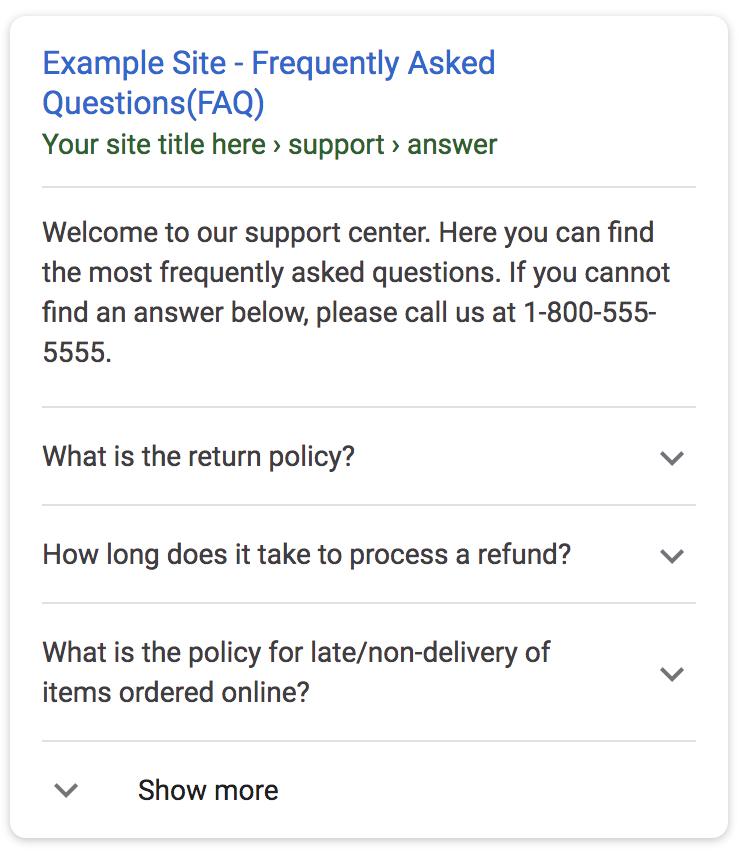Local SEO Scheme: A complete guide to local tagging and rich results
How important is schema markup for local search engine optimization (SEO)?
Most local SEO experts and webmasters are familiar with the impact of well-optimized SEO elements on their landing pages, such as: B. Optimized title tags, well-written content and more.
But what exactly can you achieve by applying Schema markup to your local business website?
When it comes to organic search, there are several reasons why applying a correct and thorough schema to your website is a key competitive advantage.
In fact, Google has reiterated that schema helps search crawlers do their jobs more effectively by helping them understand a landing page and providing relevant information in the SERPs.
In this post, we will provide some recommendations to help your local business get the most out of using schemas to improve your local SEO.
First, let’s start by defining what exactly schema markup is.
The Difference Between Schema, Structured Data & Rich Results
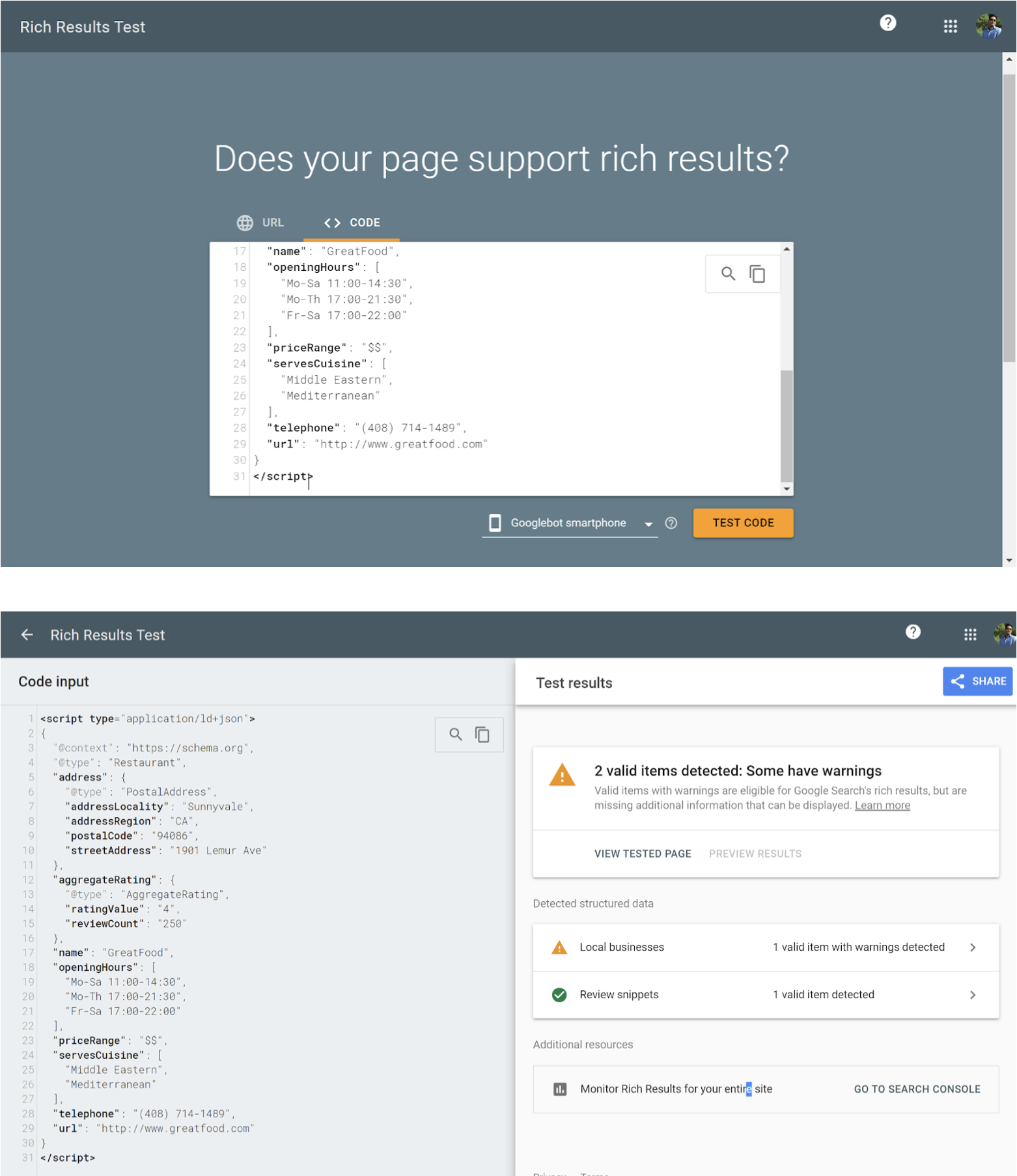
The terms “structured data” and “schema” are often used interchangeably in the webmaster and SEO industries.
However, before we delve into the recommendations, it’s helpful to understand the semantic differences between these terms.
Structured Data
Google defines structured data as “a standardized format to provide information about a page and to classify page content”.
Simply put, this format was developed to help search engines understand a web page properly in order to properly display snippets of information on search result pages.
Schema
Schema is a form of structured data officially introduced via schema.org.
Schema was created in 2011 through a collaborative effort of all major search engines (Google, Yahoo, Bing, and Yandex).
By using the markup available on schema.org, a landing page can be qualified for rich results.
Rich Results
Rich results (formerly known as rich snippets) are any additional information you see on the search engine results pages (SERPs) beyond the atypical blue title tag and meta description (breadcrumbs, rating stars, sitelinks, etc.). .
Google offers two tools to validate structured data on your website: the Schema Markup Validator and the Rich Results Test.
Here are some examples of local businesses benefiting from Rich Results:
Is Structured Data A Local Ranking Signal?
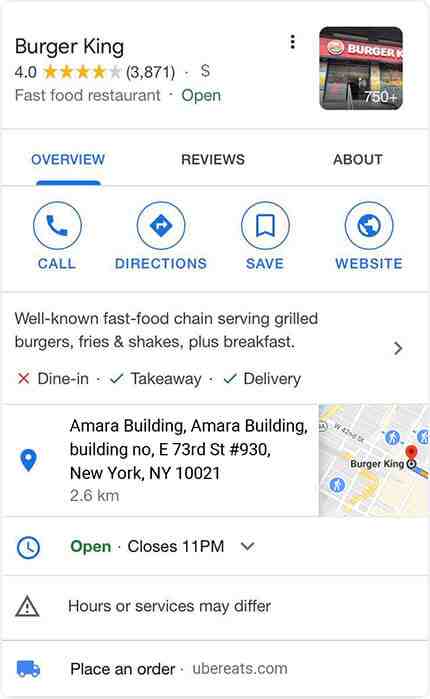
There has been much debate over the years as to whether or not structured data is in itself a search engine ranking signal.
Prominent Google engineer John Mueller has pointed out more than once that structured data per se is not a direct search engine ranking signal.
However, structured data indirectly improves search engine visibility through the following means.
Structured Data Helps Search Engine Crawlers Better Comprehend Landing Pages
Properly and thoroughly implemented structured data facilitates the work of the search crawler.
A good analogy would be comparing website properties (content, images, media files, etc.) to a garage full of various boxes and items (snow shovel for winter, inflatable pool for summer, etc.).
Let’s say you’re hosting a flea market and you want visitors (i.e. more website visitors).
It’s Google’s job to promote your flea market on the search results pages.
For most websites, Google provides the bare minimum of blue title tags and meta descriptions.
However, if your website is properly tagged with structured data, Google may very well reward your websites with greater advertising (i.e. rich results) via your flea market.
Structured data essentially puts labels on the various objects in your garage, making the Google search crawler’s job easier.
Structured Data Improves The Possibility Of Obtaining Rich Results Which Improves Click-through Rates
A rich search result is much more noticeable in search results and will most likely improve CTR (click through rates).
The CTR boost can vary depending on what type of rich result is achieved, for example FAQ results perform very well.
This means your landing page gets more traffic as users see relevant snippets about the content.
There is also some debate that an increased CTR in itself could be a positive SEO signal (signals more engagement and relevancy).
In any case, an improved CTR means more traffic wherever your website ranks.
What Structured Data Is Recommended For Local Business Websites?
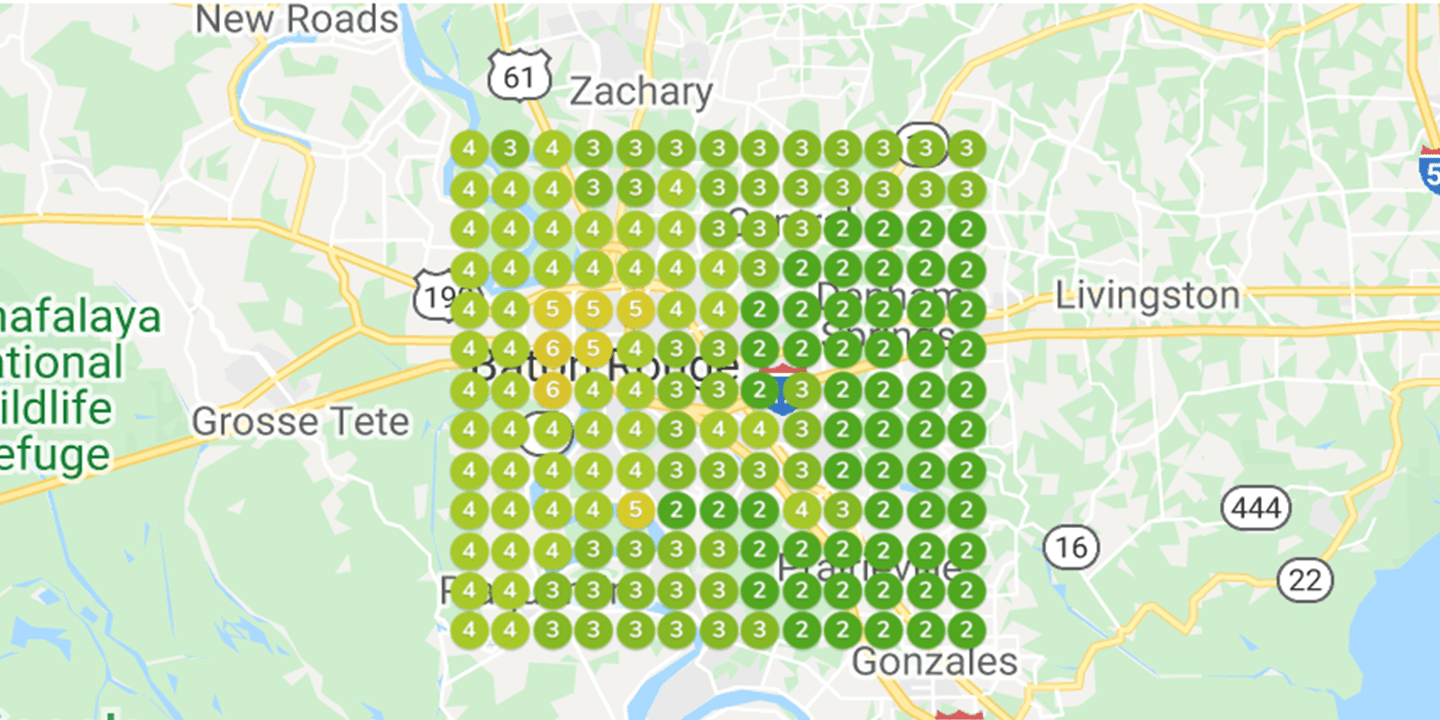
Most local websites have at least some basic structured data enabled.
However, the more thorough and detailed structured data is applied correctly, the better.
Next, we offer some step-by-step recommendations for the right use of structured data:
Select The Best Schema.org Category
Schema.org offers several different schema property options that are particularly relevant to local businesses.
In order to have the required local business schema properties (discussed in more detail below), it is imperative to choose the most relevant schema category for your local business.
For example, if you are promoting an ice cream shop, the most relevant category is schema.org/IceCreamShop.
If you’re trying to advertise a local hardware store, choose schema.org/HardwareStore.
Relevant schema categories help Google better understand your website thematically.
What If There Are No Relevant Schema Categories For My Local Business?
If you can’t find a schema.org category relevant to your business, the default category should be schema.org/LocalBusiness.
If you’re technically savvy, you can post new recommendations for schema categories on the schema.org Github forum.
The schema.org developers respond to detailed recommendations on this forum and occasionally create new schema.org properties.
I Selected The Most Accurate Category So What Should I Implement?
After selecting the appropriate category for your organization, you must have the following schema.org subproperties to ensure your schema is validated.
Errors can prevent you from getting rich search results.
The following schema properties are required for validation:
General schema properties that are highly recommended:
How Do You Make Sure Your Structured Data Is Validated?

It is very important to ensure that your structured data is properly validated.
If it doesn’t, your landing page most likely won’t qualify for rich results.
Google specifically says that if there are errors: The rich search result cannot appear as a rich search result in Google Search.
As mentioned, there are two different tools to ensure your schema is validated properly: Schema Markup Validator and Rich Results Test.
Google Search Console also offers structured data improvement reports, which are discussed in more detail below.
Schema Markup Validator
The Schema Markup Validator allows you to drill down into the details of structured data yourself.
It displays both errors and warnings.
Also, you can test structured data before enabling it on your web pages by pasting code directly into the tool.
Example of a schema markup validator result
Image from Schema Markup Validator, May 2022
Just to point out that while it is imperative to correct errors in structured data, you will often see structured “warnings” as well.
These warnings are of much less importance, and Google’s John Muller even mentioned that you don’t have to fix all warnings.
Lots of websites have revenue from structured data, and that’s perfectly fine.
Rich Results Test
The Rich Results Test is Google’s official tool to see which rich results can be generated by structured data.
You can also use this tool to preview what rich results will look like in Google SERPs.
Example of a test preview for rich search results
Image from the rich results testing tool, May 2022
The rich score testing tool also reports errors and warnings on structured data.
As mentioned earlier, warnings are common and do not prevent rich search results from appearing.
However, structured data errors must be resolved in order to qualify for rich search results.
Structured Data Monitoring Via Google Search Console
Google also offers site-wide structured data monitoring via Google Search Console.
It is highly recommended to have a verified Google Search Console account for your local business website to enable monitoring.
Google Search Console will provide sitewide improvement reports on how many webpages have validated structured data, warnings and errors.
Google also sends out notification emails when there are problems with structured data on your local business website.
It is recommended to pay attention to these notifications.
Example of a sitewide report with structured data
Image from Google Search Console, May 2022
How Can I Tell How Many Rich Results My Website Is Getting In The SERPs?
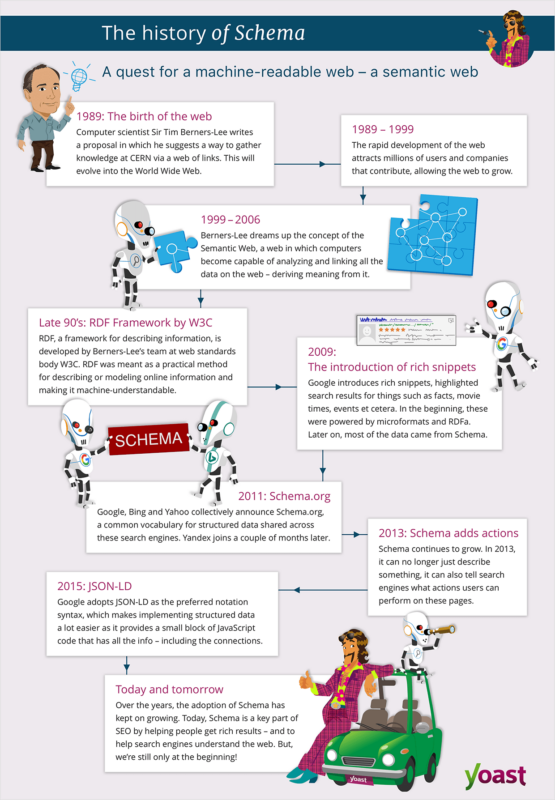
In addition to randomly checking rich results, it would be ideal to see how well a local business website is doing in all Google SERPs.
There are few third-party SEO tools that scrape Google SERPs and provide reports.
One notable tool, Semrush, has a “SERP Feature” report that shows how many aggregate rich results your site is getting.
Example of a Semrush SERP feature report
Is There Anything I Should Avoid When Using Structured Data?
Structured data is intended as code to tag or tag existing properties on your local business website.
Google specifically requires your structured data to match that on the associated landing page.
However, structured data spam does exist, and Google can impose manual penalties if it deems a webmaster to be grossly breaking the rules.
Be sure to follow Google’s structured data guidelines.
Conclusion
There is no downside to applying properly formatted and relevant structured data to your local business website.
Also, schema.org is constantly releasing new schema properties along with more integration via Google Search Console.
The most common SEO strategies (meta tag optimization, custom copywriting, design changes, etc.) usually require significant effort and visible on-page site updates.
In comparison, structured data updates are invisible to users visiting your website.
They also don’t require any direct changes to anything on your site other than a new source code script.
They also have great potential to significantly improve visibility in Google SERPs via Rich Results.
If you’re a local business looking to further optimize your website, visit schema.org with a webmaster to get started using structured data.
Featured Image: Hangouts Vector Pro/Shutterstock
What are the types of schema?
There are four basic types of schemas that help to understand and interpret the world around us… Schema Types
- role scheme.
- object schema.
- self-scheme.
- event schema.
What are the 3 types of schema theory? 2.2. 2 Three Types of Schema Schema can be classified into three types: linguistic schema, content schema, and formal schema (Carrell, 1984).
What are the four types of schema?
There are four types of these schemas, prototypes, personal constructions, stereotypes, and scripts that we use to make sense of phenomena. Any or all of these tools can be used to organize our cognition in a meaningful way. The first of the schemes is known as the prototype.
What are examples of schemas?
Examples of schemas are rubrics, perceived social roles, stereotypes, and worldviews. The concept of schema was first introduced by British psychologist Frederic Bartlett in Remembering: A Study in Experimental and Social Psychology (1932).
What are the main types of schema?
There are four main types of schemas. These focus on objects, the self, roles and events. Schemas can be changed and reconstructed throughout life. The two processes for this are assimilation and accommodation.
How many types of schemas are there?
There are three types of schemas: physical schema, logical schema, and view schema.
What are the 5 schemas?
The schema domains define 5 broad categories of a child’s emotional needs (connection, reciprocity, mutuality, flow, and autonomy).
How many types of schemas are there?
There are many types of schemas, including object, person, social, event, role, and self schemas. Schemas will be changed as we get more information. This process can occur through assimilation or accommodation.
How many schema are there?
There are two main types of database schemas: A logical database schema conveys the logical constraints that apply to the data stored. It can define constraints, views and tables. A physical database schema defines how data is physically stored on a storage system in the form of files and indexes.
What is schema markup used for?
Schema markup (schema.org) is a structured data vocabulary that helps search engines better understand the information on your website to provide rich results. These markups allow search engines to see the meaning and relationships behind the entities mentioned on your site.
What is the use of schemas? Schema is a system of markup and a form of code that you place on your website to help search engines understand your content. This system was supported by a number of search engines, including Google, Microsoft, Yahoo and Yandex, to make the site’s content clearer to multiple search engines.
What is the purpose of schema markup in SEO?
Schema markup tells the search engine exactly what your content is trying to convey on your webpage. It transforms unstructured data into structured data. Adding schemas helps the search engine to crawl better, improve the site’s ranking while keeping other SEO best practices in mind.
How does schema affect SEO?
Websites that use schema markup will rank better in the SERPs than companies without markup. One study found that websites with markup ranked an average of four positions higher in the SERPs than those without schema markup.
Why schema markup is important for SEO?
Schema markup is important because it makes your website look better in search results. As a result, additional elements such as photos or videos are displayed as rich snippets in the SERPs. Users see exactly the information they need and are likely to click on such results.
Does schema improve SEO?
Yes, schemas can help search engine optimization, as can rich snippets. Google offers both rich snippets and rich cards for certain types of results. Depending on the type of result, these features may provide users with more information or highlight your particular result in some way.
What is a schema mark up?
Schema markup, found on Schema.org, is a form of microdata. Once added to a webpage, Schema markup creates an extended description (commonly known as a rich snippet) that is displayed in search results.
How do you find a schema markup?
The Schema app structured data tester can be found on the Maintenance tab in the Schema app. Enter any URL and this tool will display the schema markup found on that page. It is the only testing tool that displays dynamic schema.org data and does not cache the results.
What is the benefit of schema markup?
Conclusion: Benefits of Schema markup Help search engines better understand the content of your website. Improve brand exposure with a complete knowledge graph. Get attention-grabbing rich results to increase CTR. Eligible for featured snippets to get more space in the SERPs.
What are rich results?
Rich search results are designed to highlight important information and help search engines understand a page’s purpose as accurately as possible. That means less guesswork for Google and more relevant results for users. Rich results consist of rich snippets and new rich cards that offer more visual real estate and a carousel function.
What is a rich test? The Rich Results Test is the latest tool developed by Google to test your structured data and preview your rich results. The test returns errors and warnings that Google detects on your product pages.
How do I get rich search results?
To increase the chance of rich results, you need to add structured data to your website. The structured data resides in a vocabulary called Schema.org and can be added to your page in a number of ways. First, you can use the classic formats: Microdata and RDFa. However, Google prefers JSON-LD.
What is a rich search result?
Rich search results are experiences across Google interfaces like search that go beyond the standard blue link. Rich search results can contain carousels, images, or other non-text elements.
How long does it take for rich snippets to appear in search results?
How long does it take for rich snippets to appear? In general, it can take anywhere from 2 to 12 weeks for a rich snippet to appear on Google. In some special cases we have seen it within a few days. But there is no guarantee.
What is the rich result?
Rich search results are designed to highlight important information and help search engines understand a page’s purpose as accurately as possible. That means less guesswork for Google and more relevant results for users. Rich results consist of rich snippets and new rich cards that offer more space for images and a carousel function.
How do I find rich snippets?
To display rich snippets, Google looks for markup formats (microformats and RDFa) that you can easily add to your own web pages. In most cases, it’s as quick as wrapping the existing data on your web pages with a few additional tags.
Why are rich results important?
Rich results were created to focus on key information and help search engines understand a page’s primary purpose. This means Google doesn’t have to guess what your page is about, and it collects more relevant search results for its users.
What is schema example?
A schema is an outline, diagram, or model. Schemas are often used in data processing to describe the structure of different types of data. Two common examples are database and XML schemas.
What is an example of a social schema? Social schemas are developed by individuals for the people in their social environment. They are adaptable because it helps us to have expectations about a situation where some of the information is unknown. An example would be attending a birthday party with a young relative.
What is the best example of a schema?
Examples of schemes When the child first goes to the zoo and sees a tiger, they may initially think that the tiger is also a dog. From the child’s perspective, the tiger fits their scheme for a dog. The child’s parents can explain that this is a tiger, a wild animal.
What is the best definition of a schema?
As a term, “schema” refers to the way data is organized within a database (in the case of relational databases, it is divided into database tables). In the formal definition, a database schema is a set of formulas (propositions) that define the integrity constraints imposed on the database.
What is a schema provide a personal example?
People schemas target specific people. For example, your schema for your friend might include information about her appearance, behavior, personality, and preferences. Social schemas include general knowledge about how people behave in specific social situations.
What is schema in simple words?
1 : a schematic representation in general : a structured framework or plan : outline. 2 : a mental codification of experience involving a particular organized way of cognitively perceiving and responding to a complex situation or set of stimuli.
What is schema in simple words?
1 : a schematic representation in general : a structured framework or plan : outline. 2 : a mental codification of experience involving a particular organized way of cognitively perceiving and responding to a complex situation or set of stimuli.
How do you explain schema?
Schema, in social science, mental structures used by an individual to organize knowledge and control cognitive processes and behavior. Humans use schemas (the plural form of schema) to categorize objects and events based on common elements and characteristics to interpret and predict the world.
What is schema in a sentence?
A schema (plural: schemata or schemata), also known as a schema (plural: schemata), is a linguistic “template”, “framework” or “pattern” along with a rule for making a potentially infinite set of phrases, sentences, or arguments to specify which instances of the schema will be called.
What is another word for schema?
In this page, you can discover 27 synonyms, antonyms, idiomatic expressions, and related words for scheme, like: blueprint, plan, strategy, game plan, design, idea, layout, project, scheme, outline, and schemes.
What is a schema give an example?
Schemata represent the way in which the characteristics of certain events or objects are remembered, determined by one’s self-knowledge and cultural-political background. Examples of schemas are rubrics, perceived social roles, stereotypes, and worldviews.
What do schema means?
Definition of scheme 1: a schematic representation in general: a structured framework or plan: outline. 2 : a mental codification of experience involving a particular organized way of cognitively perceiving and responding to a complex situation or set of stimuli.
What is event schema in psychology example?
Event schemas tell you what to do in a given situation. For example, if a fire alarm goes off, you should leave the building. That might seem like common sense, but at some point you didn’t know what such a signal meant. They learned through experience and retained information through schema.
What is a schema provide a personal example?
People schemas target specific people. For example, your schema for your friend might include information about her appearance, behavior, personality, and preferences. Social schemas include general knowledge about how people behave in specific social situations.
What is a schema in memory?
Schemas are semantic storage structures that help people organize new information they come across. In addition, they can help a person reconstruct forgotten memories.
